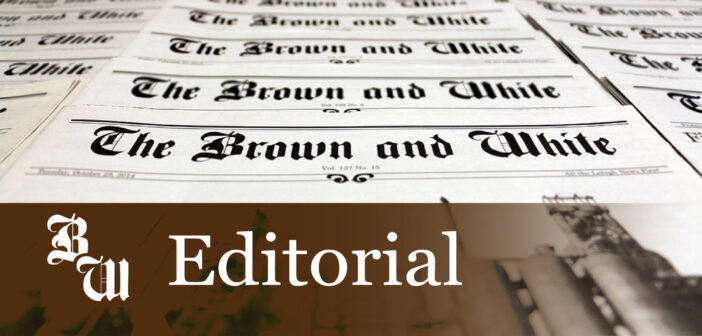At the start of Black History Month in 2022, Lehigh’s Black Student Union celebrated the raising of the pan-African flag.
During this event, Travell Gardner, ‘23, told The Brown and White, “You might not see a Black person in your class and that kind of goes unnoticed since this is a predominantly white institution. But we’re here and we’re here to stay.”
According to Lehigh’s Office of Institutional Research & Strategic Analytics, 1,673 undergraduate people of color were enrolled as of 2022. That’s 29.7% of the student body.
However, this number doesn’t break down racial or ethnic groups any further.
29.7% includes Asian, Black, Hispanic, Multi-Racial, American Indian or Native Alaskan individuals — not including international students.
By looking at the numbers, Lehigh has diversified in recent years. For comparison, only 23.3% of students at Lehigh were non-white in 2015.
To commend these efforts, Lehigh added an anti-racism supplemental prompt to their application in 2020.
It goes as follows: “…Lehigh University is committed to being an anti-racist institution. By this, we mean actively speaking out and addressing acts of racism, racist comments, racist practices, policies, and procedures. What would you want to be different in your own country or community to respond to issues of inequality, inequity, or injustice? (300-word limit)”
But are these aspirations enough to make Lehigh, a school rooted in the traditions of white patriarchy, an equitable and just place?
Even when liberal-facing prestigious institutions see the value in diversification, and use race-conscious admissions processes, change has come slowly.
Cornell law defines affirmative action by procedures that attempt to “eliminate unlawful discrimination among applicants, remedy the results of such prior discrimination, and prevent such discrimination in the future.”
And contrary to popular belief, affirmative action does not mean racial quotas. In fact, racial quotas were ruled unconstitutional in The Regents of California v. Bakke in 1978.
So, with a recent Supreme Court ruling overturning a 50-year precedent allowing institutions of higher education to consider the race of a student, making active strides in diversification will be undeniably harder.
After the ruling, Lehigh University President Joseph Helble sent campus-wide email. “Meaningful diversity among our students, including racial and ethnic diversity, is essential to our commitment to developing future leaders,” Helble wrote. “This Supreme Court decision does not change this desired end state, but it does change the processes we may use to achieve it, and so we have work to do.”
It’s hard to predict the reactionary steps institutions will take to promote inclusivity. But one thing on the minds of many, is the place of legacy admissions.
Admittedly, admission preference to students whose families have history at a particular school, is an unscrupulous bias to white, privileged and wealthy prospects.
In the class of 2026, students applying with legacy status had a 54.4% acceptance rate compared to 36% of non-legacies. About 13% of incoming students in the class of 2026 are legacy status.
At Harvard, The Crimson found a third of legacies report parental income of more than half a million dollars, compared to only an eighth of non-legacies.
Changing the unfavorable outlook of legacy policies may be a start in the continual efforts to make higher education look less white.
Will we, or other institutions, follow in the footsteps of Wesleyan University, who decided last month to end legacy admissions? How will institutions of higher education act, if at all?
Every sector of American life is touched by the unfairness of socioeconomic differences. Housing, healthcare, labor and, least of all, education.
Nikole Hannah Jones, an investigative journalist focusing on racial inequalities in education, told Vox in 2018 “People want hope. They want to believe things are getting better for black folks. What I’m arguing…is that things will never be right. An improvement doesn’t make things right; it just makes them a little better.”
Even with the possible undoing of legacy admissions post-rolling back affirmative action, it’s hard to imagine that the future of diversifying higher education is anything but grim.






Comment policy
Comments posted to The Brown and White website are reviewed by a moderator before being approved. Incendiary speech or harassing language, including comments targeted at individuals, may be deemed unacceptable and not published. Spam and other soliciting will also be declined.
The Brown and White also reserves the right to not publish entirely anonymous comments.
1 Comment
Cornell law defines affirmative action by procedures that attempt to “eliminate unlawful discrimination among applicants, remedy the results of such prior discrimination, and prevent such discrimination in the future.”
fun! I define affirmative action by procedures that attempt to “enact unlawful discrimination among applicants, enforcing NEW discrimination in a misguided attempt to undo prior discrimination, and canonize such discrimination in the future”
If you need to check someone’s race to know if they should get into a college, you’re a racist. Simple as that.